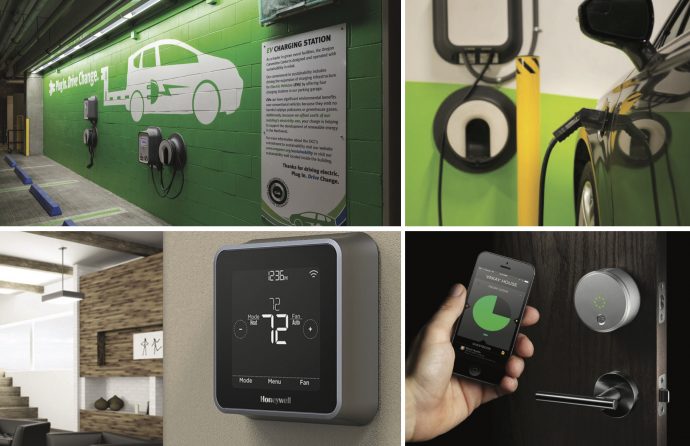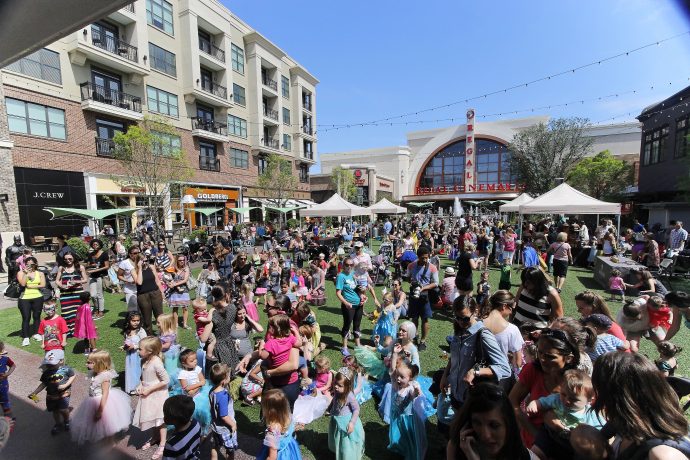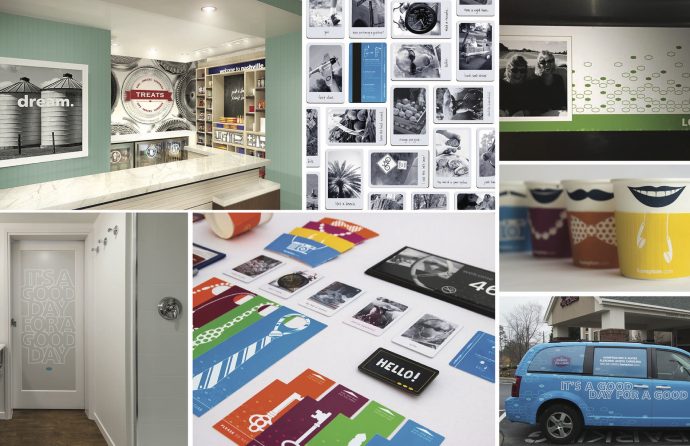We recently caught up with NELSON’s Gary Miciunas and Rob Depp as they gear up to present the “Cross-Sector Trends Influencing the Workplace Experience” via an upcoming webinar. We thought this topic would be highly relevant to our readers and as a bonus, you can enjoy the recording of the webinar compliments of Workplace Evolutionaries!
The online seminar reviews the convergence of trends they observe as part of their ongoing strategy and insights work across sectors. The May 17, 2018 presentation is part of the IFMA Workplace Evolutionaries’ WE:binar series and can be accessed HERE.
Highlights of their discussion will include:
- Users’ expectations for work experiences are being influenced by macro trends in human behavior;
- Residential, Hospitality, Retail, Healthcare and Mixed-use environments are evolving in ways that should impact the workplace;
- These converging trends are raising the expectations for a human-centered approach to co-creating workplace experiences that are convenient, customized and meaningful.
Their observations are derived from their initial survey of multi-family residential, mixed-use, hospitality, healthcare and retail sectors outlining the top three trends discovered in each. We used that information to inform and recommend five ways to influence the workplace experience based on those observations positively.
Examining Trends
Societal shifts in the ways people are living, staying, healing, and shopping is influencing the expectations they bring to their workplace. Here is a quick overview of the top three trends we see in five other sectors we studied.
Multi-Family Residential
- Urban/Hospitality Lifestyle – Urban experience is about walkability, vibe, and city amenities. Hospitality experience is about service, comfort, and
- Down-size Living Space, Up-size Amenity and Local – Common areas are expanding to accommodate residents’ needs for socializing or as ad hoc living spaces.
- Sustainability and Technology – Residents are looking for features that demonstrate environmental consciousness and give them more control of their surroundings.

Mixed-Use
- Focus on Community – Providing public spaces and community events creates the modern community center.
- Activation / Programming – Focus is on the user experience.
- Transportation Planning – Shared economy, shaping cities and enabling economic activities to promote community interaction that enhances the quality of life.

Hospitality
- Predictable to Meaningful Experiences – Recreate and otherwise improve predictable moments throughout the guest journey, leading to brand loyalty, business, and financial performance.
- Public Space Activation and Socialization – Understand and deliver on guests’ needs.
- Flexibility and Customization – Provide unexpected delights: Add credible food and beverage and local gestures that feel purposeful.

Healthcare
- Patient Consumerism – Provide freedom to control ambient environment and connection to nature. Using evidence-based design to improve patient experience and outcomes.
- Ease of Access – Telemedicine, community-based care, and remote clinical consultation and monitoring allow ease of access.
- Improved Outcomes – Layouts facilitate workflow and flexibility with “Lean” processes. Respite areas support physical, emotional and psychological wellness.

Retail
- Blurring of Physical and Digital – 360-degree brand experience integrates messaging and access.
- Experience Takes Precedent over Product – Environments are programmed with on-brand experiences.
- Personalized Engagement and Experience – Experiences, products, and fulfillment are customizable.

Exploring Recommendations
Based on our observations of these trends, there are a handful of ways to positively influence the workplace experience. These include engaging employees, empowering community managers, exploiting technology, enlivening spaces, and embodying employer brand. Here are a few questions to start the discussion:
Engage your employees and partners in co-creation
- Are you engaging your employees as actively involved consumers of better work experience?
- Identify and quantify measures to establish a baseline for the current level of user “involvement.” Set targets, strategies and tactics for increasing user involvement.
- How do you quantify your impact on non-real estate measures of talent, productivity, and innovation?
- Engage your internal and external business partners to identify non-real estate measures and the potential contribution of real estate to impact them.
- Are you engaging your internal business partners (human resources, information technology, and other stakeholders) to deliver an integrated work experience?
- Engage business partners to identify points of integration in a “Journey Map” of the employee workplace experience.” Isolate “moments of truth” that depend upon cross-functional, integrated delivery of a seamless experience.
- How do you drive innovation for tomorrow while delivering on the needs of today?
- Research “innovation” models used in other parts of your core business to evaluate their applicability to delivering the employee workplace experience.
- What is necessary to have users readily embrace and adopt innovative workplace solutions?
- Conduct user focus groups to assess interests and concerns about adopting “next” workplace solutions to be offered. Then create a desire for these solutions.
Empower “community managers” as curators of the workplace experience
- Empower community managers to deliver a delightful user experience
- Engage community managers in identifying opportunities for empowerment in their roles from their perspective. Then have real estate, human resources, and information technology enable these improvements.
Exploit technology
- Do you have the right workplace tools and technology in place and are they being utilized?
- Inventory existing tools and technology and assess the level of current utilization by employees.
- Are you adequately communicating about current tools to drive utilization, efficiency and return on investment?
- Assess current levels of employee communications that are being used to promote the availability and use of tools.
- Are you empowering a sense of community and enabling collaboration in today’s culture of “devices” and “apps?”
- Assess the current use and effectiveness of social media at work to create a sense of community and ease collaboration across work groups.
- How can you further leverage technology to integrate the “physical” and the “digital” in the workplace?
- Assess current use of technology and its effectiveness in integrating critical elements of the physical and digital experience during “moments of truth” in employees’ workday journeys.
Enliven your spaces with activities programming
- How can you better activate the common areas and shared amenities in your work environments?
- Assess current level of “activation” and programming to compare to best practices in other sectors. Gain insights from associates and stakeholders about what events they would like to see in these spaces.
- What ideas and interests do associates and partners have for activation of spaces that might draw a crowd?
- Engage users to gain their insights about what events and happenings they would like to see taking place in these spaces.
Embody your “employer brand” in the workplace
Does your work environment make a positive, memorable impression of your reputation as an employer?
- Evaluate the expression of your employer brand in the workplace and determine ways to optimize and evolve the workplace experience to express your unique brand as an employer.
Final Insights
These trends and recommendations provide strategy and insights into ways to create a work experience that is more consistent with people’s contemporary lifestyles outside of work. By not incorporating these broader patterns, employers run the risk of providing a workplace that is disjointed with people’s experience in other spheres of their lives. The expectations that employees now bring suggest an outline for a simple workplace manifesto:
- Choice and access to a variety of physical work settings and related digital services must be comfortable and convenient.
- Workers can utilize settings and services in ways that are customized to their needs and preferences that may vary daily.
- Integrated settings and services that are offered must allow for people to create their own individualized workplace experience according to what they prioritize as most meaningful to them.
These are the simple, yet not-so-easy challenges that leading employer brands will need to address in providing a better workplace experience to employees who have increasingly higher expectations.


